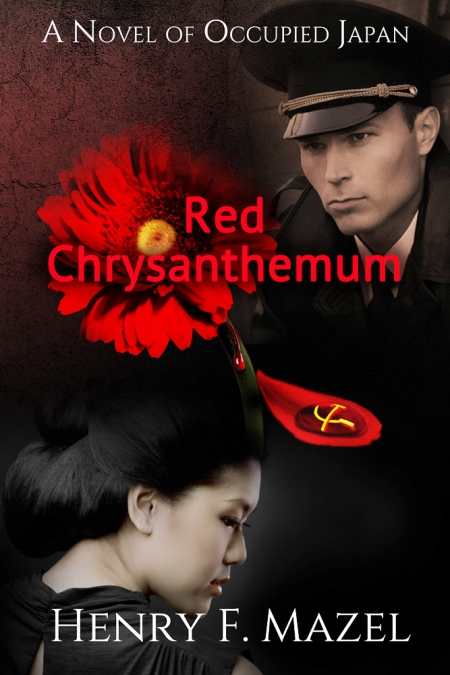Red Chrysanthemum
A Novel of Occupied Japan
Vivid descriptions of postwar Japan bring the history of the country to life.
Set in occupied Japan just after World War II, Red Chrysanthemum is an interesting story full of mystery and political intrigue. Henry F. Mazel does a remarkable job creating the atmosphere of a fictional postwar Japan through vivid and often wrenching descriptions of its landscape and people.
Lieutenant Alex Rada is working as an interpreter in Japan immediately following World War II. A disgraced former police officer, he is not very good at his job, and he does not get along well with his compatriots. When he is suddenly reassigned to a top-secret mission, he does not understand why. Working with a Japanese intelligence agent, Rada is given sketchy information about a possible assassination plot. Together, they are sent to find and arrest Kumazawa Hiromichi—a Buddhist monk and communist who claims to be the rightful emperor of Japan—before someone can kill him.
Red Chrysanthemum presents a fascinating perspective on the life of a soldier in occupied Japan. Rada is an interesting character, and his sarcasm is largely a defense mechanism to keep from getting hurt. He is casually racist, which is jarring and difficult to read but appropriate for the era. He likes Asian women and hates communists.
The story is presented from Rada’s first-person perspective, and some of his statements are beautifully insightful: “It was a long walk. And bleak. Along the dirt roads the devastation was palpable. Most of the houses had been leveled or severely damaged; you could still smell the char and rot, and that lingering odor of fish. The occasional building somehow endured untouched by the firebombing—maybe like the Japanese themselves. For a lot of us, the guys who fought in the War, the walk was even longer—back from fierce hatred to hesitant empathy.”
Though the detailed historical perspective makes the book well worth reading, the story lacks emotional depth. Much of the story centers around the relationship between Rada and a Japanese woman named Rachel, who is a prostitute. The book shares very few details beyond the couple’s initial meeting, but Rada is nearly instantly in love with Rachel, and she seems to care deeply for him. Without explaining how or why these two characters come to care so much for one another, it is hard to accept that they do.
A far bigger problem is historical accuracy. Part of the plot centers around an assassination threat to Hiromichi, a real-life businessman and Buddhist monk who claimed to be Japan’s rightful emperor. There is no record of an assassination attempt on Hiromichi as plays out in Red Chrysanthemum; in fact, he did not die until 1966. Mazel states in the preface that not all facts in the book are precisely accurate, but the reference to Hiromichi goes beyond a minor inaccuracy.
Even with its problems, Red Chrysanthemum is a fascinating book. The author does a great job of opening a window into the past and sharing his view of occupied Japan, bringing time and place to life.
Reviewed by
Catherine Thureson
Disclosure: This article is not an endorsement, but a review. The publisher of this book provided free copies of the book and paid a small fee to have their book reviewed by a professional reviewer. Foreword Reviews and Clarion Reviews make no guarantee that the publisher will receive a positive review. Foreword Magazine, Inc. is disclosing this in accordance with the Federal Trade Commission’s 16 CFR, Part 255.

